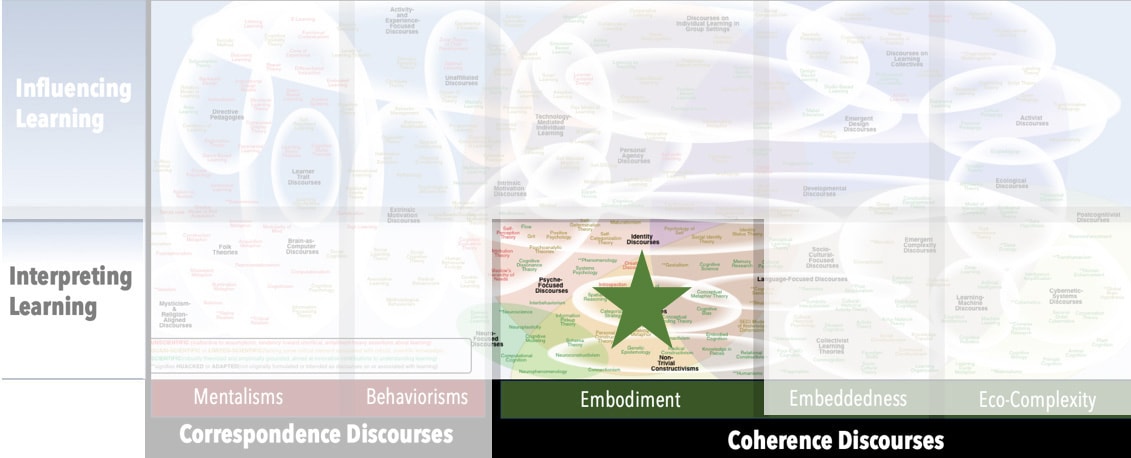AKA
Gibson's Theory of Perceptual Learning
Focus
Learning as detecting coherence in richly structured sensory informationPrincipal Metaphors
- Knowledge is … scope of possible actions and interpretations
- Knowing is … coherently interpreting; appropriately acting
- Learner is … an interactor (with/in a specific setting)
- Learning is … detecting structure
- Teaching is … designing (affordances), occasioning
Originated
1960sSynopsis
Perceptual Learning Theory breaks with a centuries-old assumption that the information from sensory receptors is jumbled and meaningless. Perceptual Learning Theory asserts that sensory information is already richly imbued with structure, and so the organism’s task is to detect it, not add it:- Perceptual Learning – learning about the similarities and differences among the meaningful phenomena in one’s sphere of experience
- Differentiation (Robert Goldstone, 1990s) – the perception of a previously unnoticed distinction (e.g., noticing the difference between discrete numbers and continuous numbers)
- Unitization (Robert Goldstone, 1990s) – the integration of two or more distinctions into a unified perception (e.g., noticing that number lines can be used to represent both discrete and continuous numbers)
- Attentional Weighting (Robert Goldstone, 1990s) – paying more or less attention to different objects or features, usually based on practice or experience. Attentional Weighting is often associated with Expert–Novice, as a quality of expertise is knowing where to focus one’s limited attentions.
- Stimulus Imprinting (Robert Goldstone, 1990s) – the spontaneous perception of an entire pattern (e.g., a person’s face). Stimulus Imprinting is enabled by specialized detectors in the perceptual system and is not dependent of Differentiation and Unitization.
- Identification Learning – a form of perceptual learning associated with abilities to identify and/or or categorize relevant stimuli after a learning experience. Identification Learning is typically described as a skill that is honed through Practice.
- Task-Irrelevant Learning (Subliminal Perception Learning; Task-Irrelevant Perceptual Learning) – the thwarting of intended or desired learnings, due to misdirecting one’s attentions onto irrelevant details in a learning situation
Commentary
The original authors of Information Pickup Theory and Affordance Theory (James. G. Gibson) and Perceptual Learning Theory (Eleanor J. Gibson) were a married couple – which helps to explain why the theories draw on and contribute to one another. Commentaries associated with those theories also apply to this one.Authors and/or Prominent Influences
Eleanor J. GibsonStatus as a Theory of Learning
Perceptual Learning Theory is a theory of learning.Status as a Theory of Teaching
Perceptual Learning Theory is not a theory of teaching.Status as a Scientific Theory
Perceptual Learning Theory is a scientific theory. Many of its core assertions have been confirmed by recent Cognitive Science research.Subdiscourses:
- Attentional Weighting
- Differentiation
- Identification Learning
- Perceptual Learning
- Stimulus Imprinting
- Task-Irrelevant Learning (Subliminal Perception Learning; Task-Irrelevant Perceptual Learning)
- Unitization
Map Location

Please cite this article as:
Davis, B., & Francis, K. (2024). “Perceptual Learning Theory” in Discourses on Learning in Education. https://learningdiscourses.com.
⇦ Back to Map
⇦ Back to List
